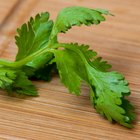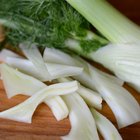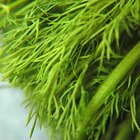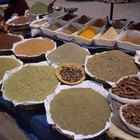Pineapple sage is a variant of the more familiar garden sage. This plant has a strong aroma of both pineapple and sage, hence its name. You might think that this herb would have a limited range of uses, but in fact it can be incorporated into a wide variety of dishes.
Chicken and Pork
Use pineapple sage to flavor chicken and pork dishes. Try marinating roast or grilled pork tenderloin in orange juice, honey and pineapple sage. Or use it as part of an herbal rub for whole roast chicken. You can also saute a few whole leaves to infuse a pan sauce with the herb's fruity aroma.
Salads
Tear or chop leaves and add to a fresh salad along with tender lettuce and any other herbs, such as basil, mint and lemon thyme, that appeal to your palate. For extra visual appeal, add the red flowers of pineapple sage as well, along with the petals of nasturtium blossoms.
Pineapple sage also works well incorporated into a fruit salad. Try it with melons in particular.
Desserts
Pineapple sage's fruity character lends itself well to desserts. Try making a pineapple sage sorbet with pineapple juice and flecks of chopped herb. Or try pound cake with minced pineapple sage leaves incorporated into the batter.
Cocktails and Other Drinks
Botanical cocktails are trendy at the moment, and pineapple sage is an ideal ingredient to incorporate into a mixed drink. Try just crushing a sprig of pineapple sage between your fingers and then dropping into a flute of champagne for a simple apertif. You can concoct a Pineapple Express by combining tequila, orange liqueur, pineapple juice and pineapple sage leaves muddled with simple syrup or agave nectar. Or simply try adding a sprig or 2 to any mixed drink featuring pineapple juice.
Sprigs of pineapple sage can be used whole to flavor teas, hot or cold, or as a quality ingredient in making a tisane. The leaves can also be used to infuse a simple syrup with which you can flavor carbonated water, lemonade or other drinks.
Related Articles

Difference Between Peppermint Extract & ...

How to Make Mango Preserves

What Herbs Go With Veal Chops?

Basil for Hair Growth

How to Crush Basil

How to Make Lemonade Using Meyer Lemons

How to Cook with Cilantro

How to Mix Liquor With Fresh Fruit & ...

How to Eat Fennel Raw

Classic Russian Spices

How to Make Melon Ice Cream

What Kind of Mixed Drinks Can I Make ...

Nigerian Herbs & Spices

What Does Lavender Taste Like?

How to Use Sage to Color Hair

How to Cook Papaya

How to Keep Pineapple From Browning

How to Eat a Quince

How to Cook Pork Hamonado
How to Julienne Mint
References
Writer Bio
Lori A. Selke has been a professional writer and editor for more than 15 years, touching on topics ranging from LGBT issues to sexuality and sexual health, parenting, alternative health, travel, and food and cooking. Her work has appeared in Curve Magazine, Girlfriends, Libido, The Children's Advocate, Decider.com, The SF Weekly, EthicalFoods.com and GoMag.com.